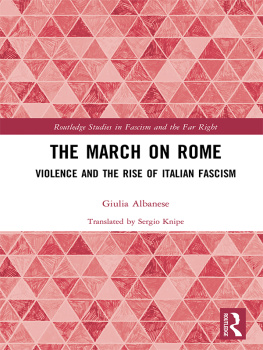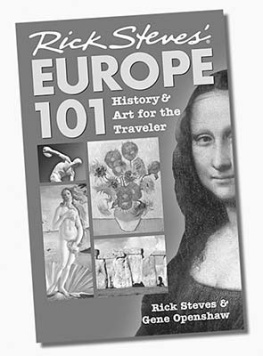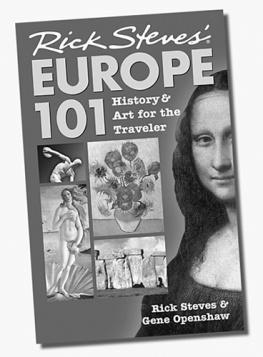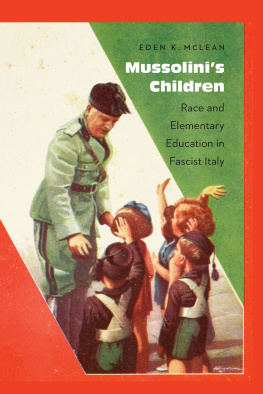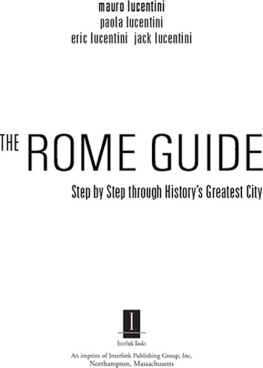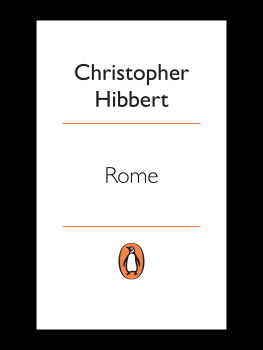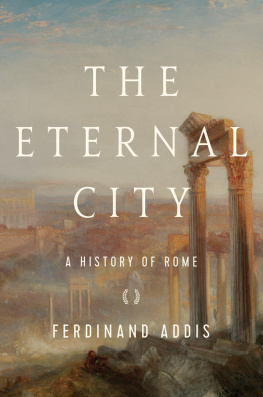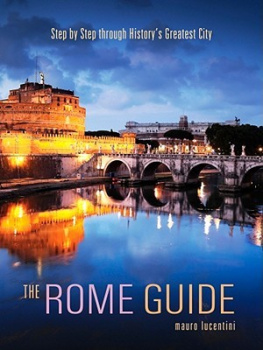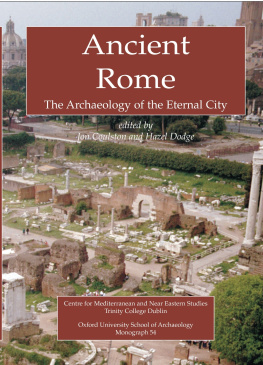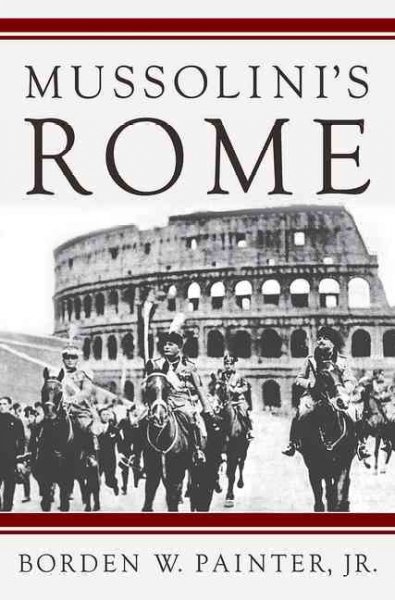
Table of Contents
ITALIAN AND ITALIAN AMERICAN STUDIES
Stanislao G. Pugliese
Hofstra University
Series Editor
This publishing initiative seeks to bring the latest scholarship in Italian and Italian American history, literature, cinema, and cultural studies to a large audience of specialists, general readers, and students. I&IAS will feature works on modern Italy (Renaissance to the present) and Italian American culture and society by established scholars as well as new voices in the academy. This endeavor will help to shape the evolving fields of Italian and Italian American Studies by re-emphasizing the connection between the two. The following editorial board of esteemed senior scholars are advisors to the series editor.
REBECCA WEST
University of Chicago
FRED GARDAPH
Stony Brook University
JOSEPHINE GATTUSO
New York University
JOHN A. DAVIS
University of Connecticut
PHILIP V. CANNISTRARO
Queens College and the
Graduate School, CUNY
HENDIN VICTORIA DeGRAZIA
Columbia University
Queer Italia: Same-Sex Desire in Italian Literature and Film
edited by Gary P. Cestaro
July 2004
Frank Sinatra: History, Identity, and Italian American Culture
edited by Stanislao G. Pugliese
October 2004
The Legacy of Primo Levi
edited by Stanislao G. Pugliese
December 2004
Italian Colonialism
edited by Ruth Ben-Ghiat and Mia Fuller
July 2005
Mussolinis Rome: Rebuilding the Eternal City
Borden W. Painter Jr.
July 2005
Representing Sacco and Vanzetti
edited by Jerome A. Delamater and Mary Ann Trasciatti
forthcoming, September 2005
Carlo Tresca: Portrait of a Rebel
Nunzio Pernicone
forthcoming, October 2005
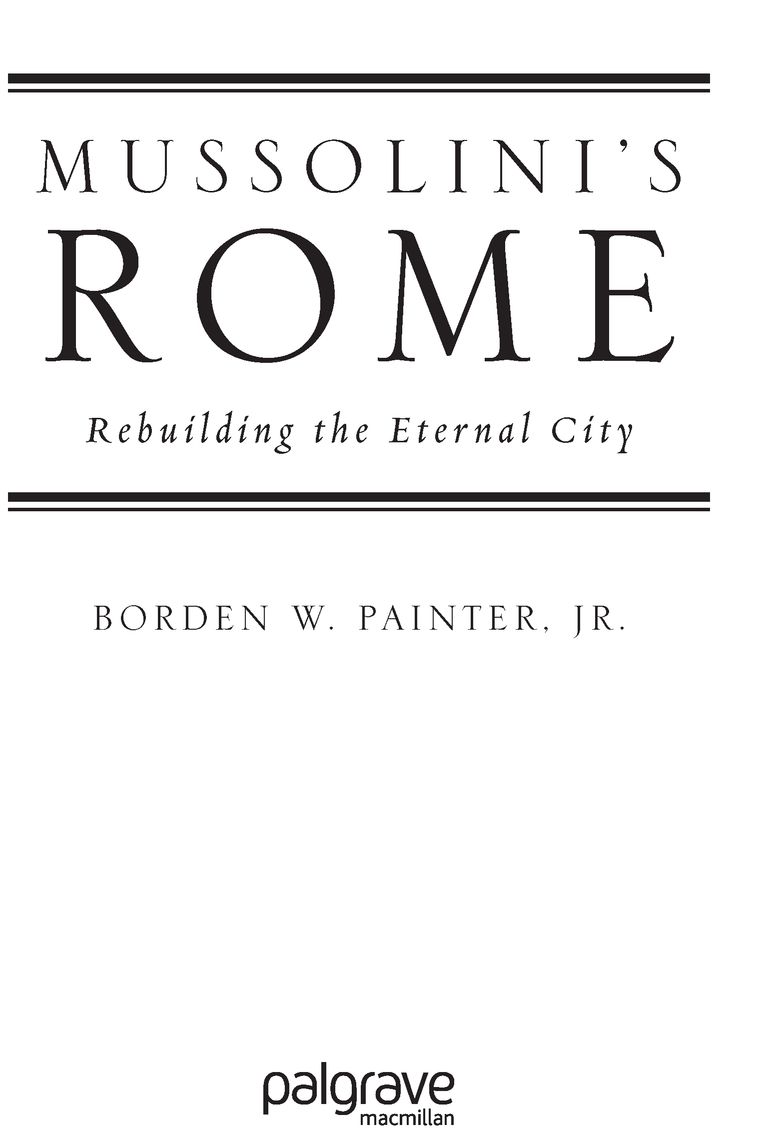
PREFACE AND ACKNOWLEDGMENTS
I developed the idea for writing this book during numerous trips to Rome over the past three decades. Trinity Colleges undergraduate program in Rome, founded in 1970, afforded me the opportunity to return to Rome often as teacher, administrator, and researcher. In 1971 I taught in the summer program and began to explore Rome from our site in a convent on the Aventine Hill. How glorious it was to discover the ancient, medieval, Renaissance, and baroque sites of the city!
From the Aventine I could look over the Circus Maximus to the Palatine Hill. Just to the left was the Capitoline and to the right the Arch of Constantine and the Colosseum. Around the corner from our campus was the fifth-century church of Santa Sabina, and just down the street the Knights of Malta with Piranesis famous keyhole view of St. Peters Dome. I discovered the word palimpsest as an apt description of Rome as one layer of history upon another.
As I explored the neighborhood and the city, I began to notice the remnants of a more recent layer of Romes history, the fascist period. There on the modern retaining wall of the ancient Theater of Marcellus was the fascio, the bundle of sticks with a protruding ax that gave fascism its name and its symbol. The Theater of Marcellus looks out on a wide street that is obviously modern. In fact, it is clearly of fascist origin, for there are large fascist-era office buildings on both sides of the street. The largest one, now the Anagrafe, Romes hall of records, bears the plaque with Mussolinis name still quite legible.
In the early 1980s I began to read articles about architecture during the fascist period and about many of the buildings erected by the regime in Rome. Fascist architecture, art, and culture had begun attracting scholarly attention on a large scale for the first time since World War II. Then in 1982 I organized a conference on Mussolini and Italian Fascism at Trinity College with papers given by an international group of historians, including Renzo De Felice and Denis Mack Smith. An archivist from the Archivio Centrale dello Stato in Rome presented a paper that caught my interest. He described the ACSs efforts to organize its collections of documents relating to the Exhibition of the Fascist Revolution, the Mostra della Rivoluzione Fascista (MRF) of 1932. A few years later, I commenced reading about the MRF at the archives and thus began research on Rome during the fascist period.
The research on the Mostra led to a wider study of Romes transformation by Mussolini. I began to think about this book in the fall of 1996 while teaching in Trinity Colleges Rome program, especially while taking students on several walking tours of Mussolinis Rome. I returned for another semester in 2000. This time I had more information to share with my students and hundreds of slides to use in showing them how the fascist regime had transformed the city. In between these two semesters in Rome, several colleagues in modern Italian history encouraged me to write a book about Mussolinis transformation of Rome that would be both comprehensive and concise. I also began to give slide lectures on the subject to both academic and more general audiences. The enthusiastic reception of these lectures further convinced me that a book on fascist Rome would appeal to a variety of readers. Rome is, after all, one of the great cites of the world, attracting millions of readers and visitors every year. Such a book would open up a new way to see and understand the city.
The scholarly interest that began in the early 1980s has borne fruit in many articles and monographs on various aspects of fascist art, architecture, culture, and propaganda. This book combines a synthesis of much of that scholarly work with my own research. I trust that the result will be of interest to scholars, students, and general readers.
There are many friends and colleagues to thank for the help, inspiration, and advice I received over the years. The late George Cooper encouraged me to begin teaching courses on modern Italy in the early 1970s. Michael Campo founded Trinitys Rome program in 1970, which opened up opportunities for teaching and research in Italy and continues to this day to inspire and inform me in countless ways. More recently my colleagues John Alcorn and Dario Del Puppo provided support for this subject through the Barbieri Endowment for Italian Culture at Trinity. I am grateful to Kristin Triff for her enthusiastic support and her perspective as an architectural historian. Colleagues at the Rome program, especially Livio Pestilli, Francesco Lombardi, and Patricia Osmond, have helped me literally find my way around Rome as well as offered help and advice that could come only from natives and residents of the city.
The list of fellow historians of modern Italy whose work, example, and friendship have been so important to me includes Philip Cannistraro, Alexander De Grand, Frank Coppa, Joel Blatt, Ruth Ben-Ghiat, Marla Stone, Mary Gibson, Roy Domenico, John Davis, Mark Seymour, Alice Kelikian, Andy Canepa, Spencer Di Scala, Roland Sarti, Alexander Stille, and the late Claudio Segre. Some were regulars at the Columbia University Seminar on Modern Italy, which provides a wonderful forum for those of us close enough to New York to attend. Special thanks to Stan Pugliese, whose interest in my presentation on Mussolinis Rome to the seminar in March 2003 led to the contract with Palgrave Macmillan.
I did the research for this book in a number of places. The Yale libraries contain many books and periodicals from the 1930s. A trip to the Wolfsonian Institution in Miami Beach allowed me to read a number of difficult-to-find Italian publications from the period. The Archivio Centrale dello Stato and the Biblioteca Nazionale in Rome are rich in materials and relatively easy, by Italian standards, to use. In the fall of 2000 I spent many hours at the library of the American Academy in Rome and, thanks to its hardworking copying machines, could bring thousands of pages of material home. Trinity Colleges library has excellent resources in modern Italian history that I have relied on for the past three decades. I am indebted to the staff at all these institutions for their professionalism and many kindnesses.
Next page


